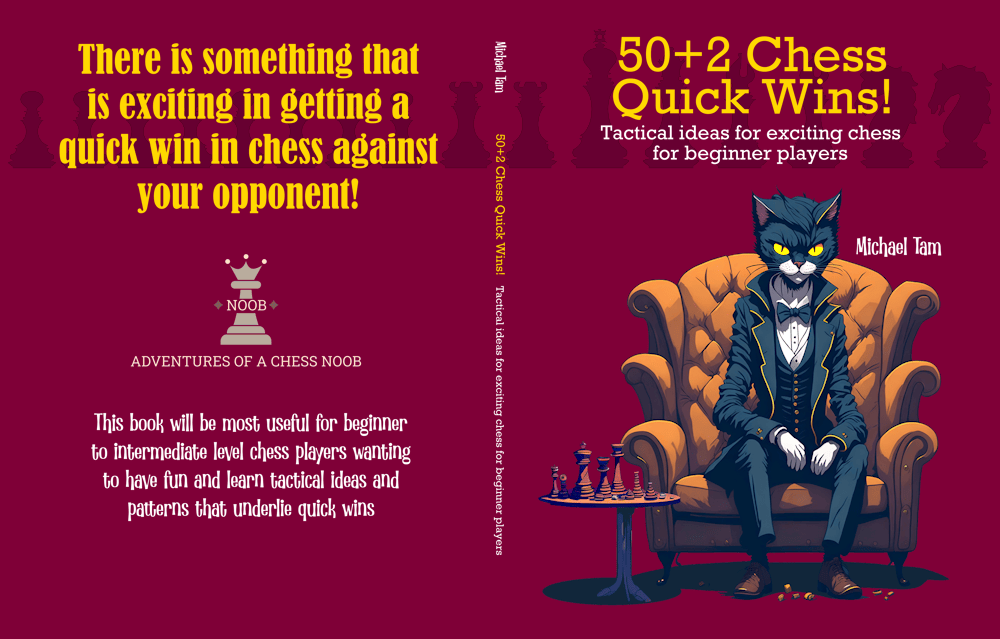
DEFEAT the DETERMINED Wayward Queen Attack player! 🧐♟️
#waywardqueen #black #openingtactics #beginnertips
Many beginner players will experience the Wayward Queen Attack (1. e4 e5 2. Qh5?!) – either playing it themselves or facing off against it. Likely it’s been played tens if not hundreds of millions of times on online platforms! When we last looked at the Wayward Queen Attack, I reported that it was played in 10% of (1. e4 e5) games by lower-rated players!
Once you’re out of the beginner level, it’s rare to play against the Wayward Queen Attack as fundamentally, it’s not that good. The reason is that at White’s fourth turn after (2… Nc6 3. Bc4 g6), White could continue with the attack (4. Qf3) [-0.15 to -0.25, Stockfish 17 @ depth 60], but according to the best computer engine analysed at very high depth (note: Stockfish 17 was just released a few days ago!) this is only marginally better than (4. Qd1) [-0.20 to -0.30], un-developing the queen to her starting square and aborting the attack! In fact, I’ve written before that for White, this strategic retreat with Qd1 is probably the best approach!

After 1. e4 e5 2. Qh5 Nc6 3. Bc4 g6 White can continue the attack with Qf3 or abort with Qd1.
![]()
I suspect that for most people who play the Wayward Queen Attack as an early guilty pleasure against other beginner players, they realise this and eventually abandon the line. However, there is the occasional person who will double-down on the Wayward Queen Attack and learn the next series of accurate moves. I recently had an unrated game of 10-min rapid against a determined Wayward Queen Attack (WQA) player, and I thought that this would be a great opportunity to demonstrate the ideas on how to respond with Black! 😉
If White plays (4. Qf3), seeking another Scholar’s Mate on f7, then the natural move for Black is to block that attack by developing the king’s knight (4… Nf6). For the determined WQA player, the move they need to know is that they must defend the d4 square with (5. Ne2) to disallow Black from playing Nd4, a powerful move that attack White’s queen on f3, winning tempo, and forks White’s c2-square which comes with an absolute fork of the king and rook.
What do we do now as Black? It’s useful to take stock of what’s happened and think about some tactical possibilities:
- White has potentially won a concession with Black having played g6, potentially weakening the kingside pawns. However, if we fianchetto the dark square bishop (Bg7), this gives post-hoc justification for g6! In essence, Bg7 and short castling the king out of the centre are obvious moves in the near term.
- White’s wayward queen remains a potential target for harassment from minor pieces, especially if it comes with natural developing moves. In this game, I played (5… d6) first, with a potential future Bg4, which would attack and win tempo on White’s queen.

After 4. Qf3 Nf6 5. Ne2 White’s should fianchetto the king’s bishop, castle short, and play d6 to hold the centre and allow the light square bishop to develop.
![]()
White responded to my threat of Bg4 with (7. d3), controlling the g4 square. And so, as per our described plan, I fianchetto the bishop (7… Be6). White plays a developing move (7. d3) and a logical next move for Black would be to short castle. However, in this game I wanted play something a little more combative with (7… Be6), offering a bishop trade. A bishop trade is good for me as it removes White’s active bishop, taking away the Scholar’s Mate threat.
They accepted (8. Bxe6 fxe6), and here I was happy as the f-file is semi-open and so after (9. Bg5 O-O), I control the semi-open f-file with my rook and am threatening a tricky discovered attack on White’s queen!
Stockfish considers the move slight suboptimal [-0.4 → 0.00], but at this point, we’ve crossed a threshold. If we look at the line of the determined WQA player in the Lichess community database, up to now it gives a small win ratio advantage to the player with the White pieces. Simply, those who play down such a line will likely have studied it to some degree. However, at the beginning of the middlegame, the win ratio flips – Black wins 54% to White 42%! What this implies is that the position is easier and simpler to play for Black!
We see this immediately as the logical looking move by White (10. Nbc3?!) developing their queen’s knight is unexpectedly inaccurate [-0.7]. What isn’t necessarily obvious is that White needed more defence of the c3 square to prevent forward mobility of my c6-knight.
White trades down (11. Bxf6?) and I recapture with a tricky move (11… Bxf6!?) rather than more directly capturing with my rook. The visible THREAT of a discovered attack can often be as effect as the actual attack! White didn’t find the best move with (12. Qe3?) [-1.7] which gives me yet another tricky move with (12… Nd4!?), threatening a family fork with Nxc2+!
Here, White’s best moves are to defend the c2-pawn, but they couldn’t resist to snap capture with their knight which if you remember, moved very early on turn 5 to e2 to defend the d4 square (13… Nxd4??). This is a blunder as Black’s pawns control the centre, supported by the dark square fianchetto bishop on the long dark square diagonal! Black responds with (13… exd4, a fork of White’s queen and c3-knight) and White cannot help but lose a piece. After (14. Qd2 dxc3), White resigns, emotionally defeated! Good game, GG!
The big takeaway from this game is that it’s worth spending a little bit of time learning how to respond as Black against the determined Wayward Queen Attack player! The opening ideas largely make sense – fianchetto your dark square bishop, castle kingside, and create threats on White’s queen when it’s sensible to do so, but not ostentatiously.



